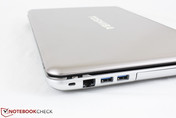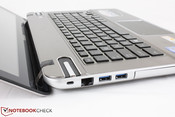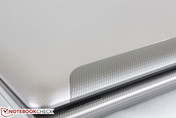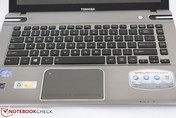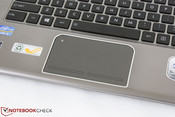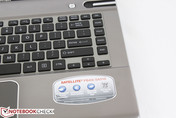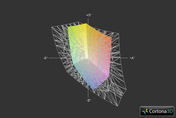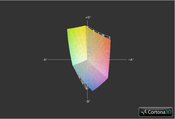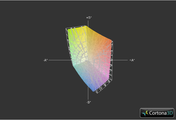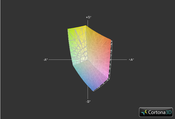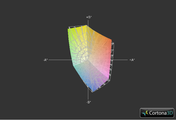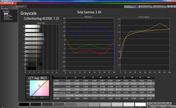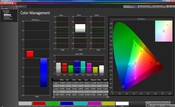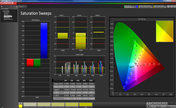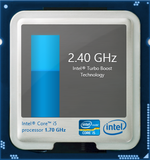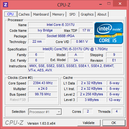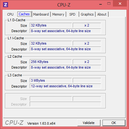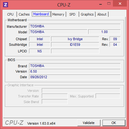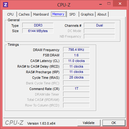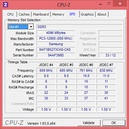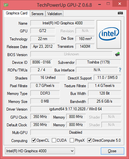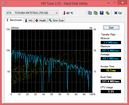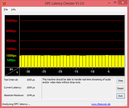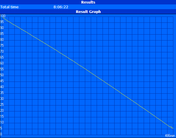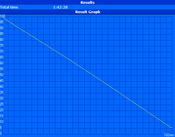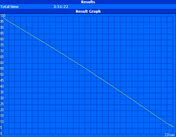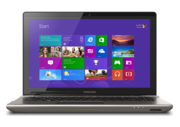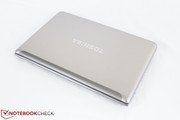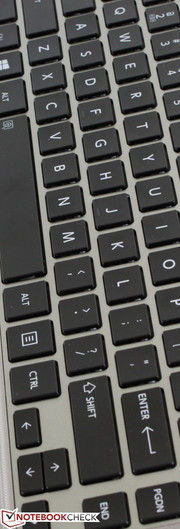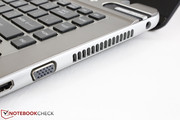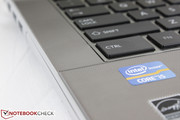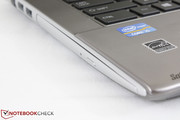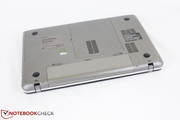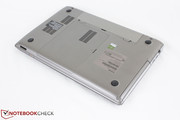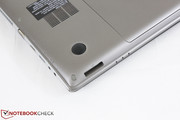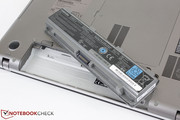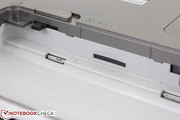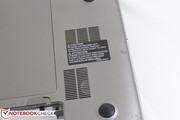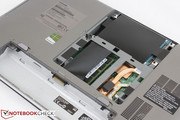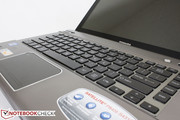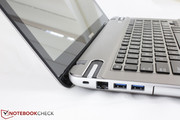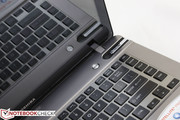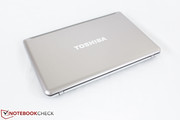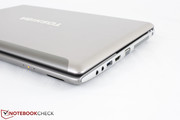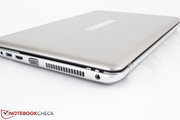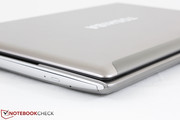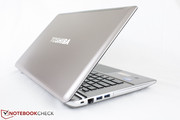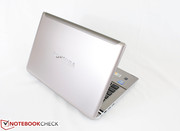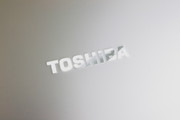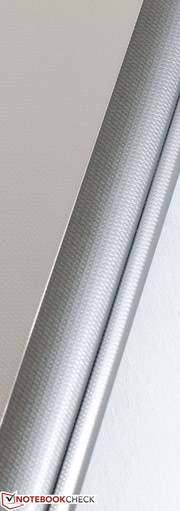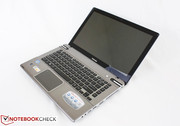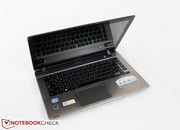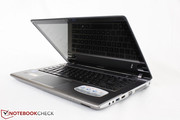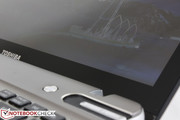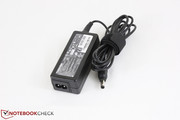Review Toshiba Satellite P845T-S4310 Notebook

Similar to the Lenovo IdeaPad series, the Toshiba Satellite series focuses on consumer-grade notebooks for a wide range of both budget and multimedia users. As a result, a Satellite model can be as affordable as a 15.6-inch S855D or as expensive as the convertible 12.5-inch U920t.
This review focuses on the P845T-S4310, a Satellite belonging to the lower-end of the spectrum but with added touchscreen capabilities for a more intuitive and engaging Windows 8 experience. The model replaces its non-touchscreen equivalent, the P845, and is available for $700-$900 at U.S. brick-and-mortar stores. Aside from the milti-touch display, the hardware specifications read like a standard notebook: ULV Core i5-3317U CPU with integrated HD 4000 graphics, 14.0-inch 1366x768 resolution display, 6 GB RAM, and a 750 GB HDD. The model is available in Core i3 and 4 GB RAM configurations as well for even lower prices.
The P845T, however, is not alone in the market. Can this Toshiba rely on its touchscreen advantage to make it a worthwhile purchase over competing and similarly priced IdeaPad Z, Dell Vostro, or Acer Aspire models?
Case
The chassis of the P845T is similar in build and appearance to its 15.6-inch version, the Satellite P855. Both the looks and texture of the notebook are unlike many other Satellite models as there is no ultra-smooth or reflective sheen on the surfaces outside of the inner glossy display. Instead, the silver surfaces of the case are textured with small bumps that diffuse glare, reduce fingerprints and give it a more affable style than the usual cookie-cutter budget cases.
As another advantage over competing notebooks in this price range, the P845T uses a full-body aluminum case. This certainly makes it handle better than most IdeaPad notebooks where the thin plastic can sometimes feel very obvious, though the case is not perfect either. While the palm rests, edges, and corners feel thick, both the lid and center of the keyboard lack rigidity and can be easily depressed with a push from a finger. A small gap between the left palm rest and the optical drive directly beneath it does exist, though this has no negative repercussions on the durability of the case. The display is fortunately protected with edge-to-edge glass to handle constant inputs and shows no sign of weak or heavily bendable areas.
At 2.16 kg, the P845T sits in the middle of similar 14-inch notebooks like the lighter Aspire M3-481 (1.95 kg) and IdeaPad U410 (1.8 kg) and the heavier Asus Pro B43V (2.5 kg) and Sony Vaio SV-E14 (2.3 kg). Similarly, its thickness of 29 mm is thinner than the Asus mentioned above, yet noticeably thicker than the Acer, Sony, and Lenovo models. Ultrabooks, of course, can be much lighter and thinner at the expense of additional connectivity options and ease of end-user serviceability. Aside from the glass-protected screen and aluminum build, the dimensions of the P845T are quite standard and certainly not as sleek as the thinner IdeaPad U410 or Aspire M3.
Connectivity
The Toshiba offers all the basic physical connectivity ports on the left- and right-hand edges and they are thus easily accessible; only the card reader sits on the front edge and may be harder to access for users with larger fingers. The model also offers only USB 3.0 ports, two of which are Sleep and Charge compatible, and no USB 2.0 ports.
Unfortunately for right-handed users, the video-out and audio ports are located closer to the front of the right-hand edge and can potentially take up valuable desk space if used often. Cables, especially the thick HDMI and VGA cables, will more likely entangle in front of the user instead of on the rear of the notebook. Left-handed users are more in luck as the Ethernet and 2x USB 3.0 ports are relegated towards the back with the non-intrusive optical drive towards the front.
Communication
For wireless communication, basic WLAN is provided by Intel’s Centrino 2200. There is no integrated Bluetooth to speak of, though users have access to a SIM slot behind the battery underneath the notebook. We ran into no connectivity or unexpected dropout issues during our time with the P845T.
Accessories
No accessories are included with the P845T aside from the usual AC adapter and small quick start guides. There are no dedicated accessories as well due to the lack of any dedicated docking ports or connections. Additional 6-cell batteries and Toshiba Dynadock docking stations are available from the manufacturer for $130 and $170, respectively.
Warranty
The standard one-year parts, labor, and battery warranty applies here with a 90-day limited warranty. Buyers can extend to five-years of coverage total with the usual options for accidental damage and on-site services. Registering the hardware will also net users notifications on system updates and other specific promotions.
Input Devices
Keyboard
The non-backlit Chiclet keyboard is of ample size (30 cm x 10.5 cm) with wide spacing between each key. Some keys do seem a hair smaller than what we are used to from other notebooks as a result, especially the Home, PgUp, and PgDn column of keys on the right end. Typing produces very little clatter and noise, but both the travel and feedback are awfully soft and unsatisfactory. Keys feel very mushy, even the Space key, and may suffer from missed hit keys from time to time. The small arrow keys are the worst offenders in particular with very spongy feedback. The keyboard leaves much room for improvement.
Touchpad
The matte plastic touchpad is large (10.0 cm x 6.4 cm) and outlined with chrome for improved aesthetics. It is the exact same touchpad as found on the larger 15.6-inch P855, even down to the size and Synaptics ClickPad V1.4 software. The touchpad can be disabled or enabled by double-tapping the corner icon.
We had no issues with responsiveness or delays with the touchpad during use. Multi-touch gestures also work smoothly due largely to the ample space provided. Clicking feels shallow but firm with satisfying feedback. The cursor does experience input delays when the notebook is under constant full CPU and GPU load, though this is an unlikely scenario during everyday use. Generally speaking, the touchpad feels much more comfortable to use than the accompanying keyboard.
Touchscreen
The 10-point multi-touch display allows for all the usual Windows 8 gesture commands including pinching, swiping, and other manipulations on running applications. Pages were able to scroll, zoom, hide or focus smoothly and reliably with few input errors. The touchscreen can potentially increase usability for users who know the ins and outs of Windows 8 as the OS was arguably built for touchscreen devices as a priority. Otherwise, we still find that an external mouse is still the best way to interface with the system for work or productivity reasons.
Display
The glossy display looks impressive from a distance, especially with its edge-to-edge layer of glass, and certainly gives off a more high-end feel than what its price would otherwise suggest. Upon closer inspection, however, the display quality is rather standard and offers nothing eye-popping in terms of sharpness or color. The 1366x768 resolution display is expected from budget 14-inch to 15.6-inch notebooks. Note that Ultrabooks with denser pixel counts are continuing to become more common and less expensive should users demand higher resolution displays.
The average screen brightness of almost 200 nits is suitable for indoor use, albeit the brightness distribution is somewhat poor at less than 80 percent. Black levels are also below average with very noticeable backlight bleeding.
| |||||||||||||||||||||||||
Brightness Distribution: 76 %
Center on Battery: 170.3 cd/m²
Contrast: 224:1 (Black: 0.88 cd/m²)
37.17% AdobeRGB 1998 (Argyll 3D)
53.8% sRGB (Argyll 3D)
35.96% Display P3 (Argyll 3D)
Color space reproduction is poor at about 52 percent of the sRGB spectrum. As a result, colors do not appear as deeply or accurately as they are meant to be represented. The display performance of the P845T is similar to other notebooks in its price range such as the Aspire M3-481 and IdeaPad U410, so the color inaccuracies are a common property of displays on budget models. Fortunately, such measurements are likely to be applicable only for serious digital artists or graphic designers.
Under further analysis with the X-rite i1 Pro Basic 2 spectral profiler, we observed very warm color temperatures of almost 9000K and the display's inability to produce balanced blue hues when compared to the other two primary colors. Other colors are also poorly represented quite equally in the tested saturation levels, showing both poor DeltaE values and color representation all-around.
Outdoor usability is very poor due to the combination of a glossy display and an insufficient brightness. Furthermore, the backlight will automatically dip if running on batteries, making use even more difficult in outdoor conditions. Working under shade and at maximum screen brightness is almost a necessity if outdoor use is unavoidable.
Viewing angle stability is poor and typical of budget TN panels. The narrow window becomes even narrower during movies where colors, blacks and grays can shift dramatically and quickly between scenes. Slight degradation on the corners can be observed even if viewing from the sides if the user is slightly off-angled above or below the center normal. Sharing the display during video playback can thus be inherently difficult.
Performance
The P845T is powered by a dual-core Core i5-3317U. The ULV Ivy Bridge CPU is one of the more prevalent models in newer Ultrabooks and offers a performance level roughly similar to a standard-voltage Sandy Bridge Core i3-2310M. The processor idles at 800 MHz in the Toshiba, but will otherwise operate at its base 1.7 GHz speed up to 2.4 GHz or 2.6 GHz Turbo Boost. For more technical information and benchmarks on the i5-3317U, see our dedicated page here.
For RAM, the system makes use of 1x 4 GB module and 1x 2 GB module for a total of 6 GB of RAM. Both SODIMM modules are provided by Samsung and are easily accessible alongside the 2.5-inch HDD via a hatch underneath the notebook. Direct access to the fan, heatsink, and other motherboard components, however, will require additional dismantling.
DPC Latency Checker shows no recurring high latency peaks even with wireless radios active. The program's compatibility with Windows 8 is not yet completely reliable, so its results should be taken with a grain of salt.
Processor
The synthetic CPU-oriented benchmarks place the 845T in the same range as other notebooks sporting the same CPU according to our database. In particular, its CineBench R10 and wPrime scores are very similar to some well-known models like the Lenovo Twist and Yoga 13. As such, the CPU performance is of the expected level and is in no way unexpectedly hindered by other components of software. The Toshiba was also able to complete SuperPi 32M faster than most other i5-3317U-equipped notebooks in our database, thus showing excellent single-core Turbo Boost sustainability. When considering the target home user, the ULV core i5 in the P845T should be more than enough for everyday use, HD playback, and light gaming.
System Performance
General system performance was benchmarked with PCMark 7. PCMark Vantage continues to be incompatible with Microsoft's latest OS despite the makers claiming a compatibility fix "soon". We provide the Performance Index scores below from Windows 8 as well, though note that these scores are not directly comparable to that of any Index numbers from Windows 7.
Final PCMark 7 scores were average at just 2657 points. This is above competing notebooks like the IdeaPad Z580 and Vaio SV-E14, but is nowhere near systems with dedicated SATA III SSDs where final scores of 4000 points or higher is not uncommon. Repeated runs of PCMark 7 did not result in ballooning numbers since the P845T does not make use of any SSDs for caching purposes. Unless if the notebook is equipped with high-end processors to make up for it, systems without any SSDs will almost always have a disadvantage in general system responsiveness and PCMark scores. We recommend upgrading the HDD in the P845T for a greatly improved experience.
| PCMark 7 Score | 2657 points | |
Help | ||
Storage Devices
A standard 750 GB 5400 RPM HDD from Toshiba is included with the P845T-4310. With an average transfer rate of almost 70 MB/sec according to HD Tune, the drive is very slow. The Samsung and Hitachi drives in the IdeaPad Z580 and 2012 Vaio T13, respectively, also spin at 5400 RPM but with average transfer rates well above 80 MB/sec. Faster 7200 RPM drives can and do break the 90 MB/sec mark. See here for our growing list of HDD and SSD benchmarks.
Toshiba may have preferred an HDD solution against the more expensive SSD option, but there is no excuse to use a slow 5400 RPM HDD with Windows 8 instead of a faster 7200 RPM drive. Programs and apps can each take seconds longer to load, which add up very quickly and can become a hindrance to the overall experience.
Gaming Performance
Gaming under the HD 4000 GPU has been well-documented in our dedicated review, and so the P845T offers no surprises. Most modern games will play acceptably well under low-medium settings while more demanding titles will have to settle for lower graphics still. The relatively low resolution of the Toshiba means that most games should run satisfactory as long as most graphical features are disabled.
As noted in our stress test below, GPU performance will drop significantly if running on batteries, which will adversely have an effect on gaming performance. Running on AC power is highly recommended for optimal 3D gaming.
| low | med. | high | ultra | |
|---|---|---|---|---|
| Guild Wars 2 (2012) | 35 | 14 | ||
| StarCraft II: Heart of the Swarm (2013) | 110 | 28 | 15 |
| 3DMark 03 Standard | 12858 points | |
| 3DMark 05 Standard | 8417 points | |
| 3DMark 06 Standard Score | 5014 points | |
| 3DMark Vantage P Result | 3198 points | |
| 3DMark 11 Performance | 640 points | |
| 3DMark Ice Storm Standard Score | 34534 points | |
| 3DMark Cloud Gate Standard Score | 3727 points | |
| 3DMark Fire Strike Score | 504 points | |
Help | ||
Emissions
System Noise
At about 33 dB(A) when idling, the P845T is almost inaudible if assuming at least a 15 cm distance to the user's ears. Though the fan never stops spinning, typical everyday ambient noise is enough to drown out potential fan noise during very light workloads.
Light to moderate multi-tasking or video playback can easily bump fan speeds up to 38 dB(A), which is very audible and quite loud for quieter environments like libraries or classrooms. Higher workloads will induce maximum fan speeds with a recorded sound intensity of 40 dB(A), which is a common range amongst most Ultrabooks and office-type notebooks. It is certainly loud and typically only experienced during demanding applications and 3D gaming. Certain notebooks, such as the IdeaPad U410 and Vostro 3350, can become even louder under extreme workloads.
Noise level
| Idle |
| 32.6 / 32.8 / 32.9 dB(A) |
| DVD |
| 40.6 / 48.7 dB(A) |
| Load |
| 37.9 / 40.8 dB(A) |
 | ||
30 dB silent 40 dB(A) audible 50 dB(A) loud |
||
min: | ||
Temperature
Surface temperatures were about 30 degrees C on average on both the underside and keyboard side of the P845T when standing idle. Even without any processing loads, a clear temperature discrepancy can be observed between the left- and right-hand sides as the left palm rest is noticeably cooler than the right. The corresponding regions underneath the notebook exhibit similar temperature differences.
When under heavy processing load for over an hour, the hotspot region can be quickly felt and identified on the very center of the bottom of the notebook. At over 40 degrees C, the P845T can potentially become too uncomfortable for heavy and extended use without a flat surface or desk. Also of note is that the cooler side of the notebook remains relatively unchanged from its idling state, meaning that the notebook can exhaust its waste heat very effectively through its channels. However, care should be taken to not cover any vents underneath in order to maintain lower internal temperatures. The keyboard and palm rests will otherwise still be at appropriate temperatures for comfortable typing.
(+) The maximum temperature on the upper side is 34 °C / 93 F, compared to the average of 36.9 °C / 98 F, ranging from 21.1 to 71 °C for the class Multimedia.
(±) The bottom heats up to a maximum of 41.2 °C / 106 F, compared to the average of 39.2 °C / 103 F
(+) In idle usage, the average temperature for the upper side is 28.1 °C / 83 F, compared to the device average of 31.3 °C / 88 F.
(+) The palmrests and touchpad are cooler than skin temperature with a maximum of 31.4 °C / 88.5 F and are therefore cool to the touch.
(-) The average temperature of the palmrest area of similar devices was 28.7 °C / 83.7 F (-2.7 °C / -4.8 F).
Stress Test
Prime95 and FurMark were used to stress the notebook and to find any potential throttling issues. Under Prime95, both CPU cores were able to maintain their maximum Turbo Boost speed of 2.4 GHz each with core temperatures reaching about 63 degrees C only. Under FurMark, the GPU was found to initially run at its maximum 1050 MHz Turbo Boost, but quickly dropped and stabilized at 950–1000 MHz after the first 30 seconds.
When under simultaneous Prime95 and FurMark stress, neither the CPU nor the GPU were able to maintain their respective maximum Turbo Boost potential. The CPU dropped to its base 1700 MHz core clock rate and the GPU to a more stable 750–800 MHz range. Nonetheless, no cores ever dropped below their base speeds during the stress test and a 3DMark 11 run immediately following the stress test returned no significant changes in scores. In other words, we experienced no throttling issues with the P845T.
Another quick 3DMark 11 benchmark on battery power returned a similar CPU score vs. AC power (2935 vs. 3010 points on AC), but the GPU score was cut down to more than half (217 vs. 552 points on AC). As a result, users who may be demanding full GPU power for their applications will want to make sure to have an AC outlet nearby.
Speakers
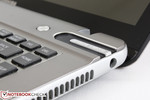
The Harman/kardon stereo speakers support SRS Premium Sound and sit adjacent to the top keyboard corners. Sound quality is very good for the size with respectable bass and treble balance throughout the volume range. Notebooks with ample bass sometimes suffer from distortion or vibrations at higher volumes, but this occurs only minimally with the P845T. Volume is satisfactory for the occasional movies and music with support for 3.5 mm external solutions if needed.
Battery Life
Battery Eater was used to assess total runtime from the 48 WHr removable battery. Under ideal battery conditions (minimum brightness while standing idle, Power Saver Profile), we were able to squeeze out just above 8 hours before automatic shutdown. Similarly, our minimum battery life conditions (maximum brightness with Battery Eater Classic Test, Performance Profile) returned almost 2 hours of runtime.
To simulate more real-world conditions, our WLAN test puts the notebook at 150 cd/m2 brightness (setting 8/10) and runs our looping script until automatic shutdown. We were able to clock almost 4 hours of runtime, which is about half an hour below Toshiba’s 4.53 hour claim. As such, users can expect a more realistic 3.5 to 4.5 hour window of constant usage from the P845T, which is a common range amongst budget-class offerings. Still, key competitors like the IdeaPad U410 and Vaio SV-E14 have clocked higher runtimes under the same WLAN test. Users will likely have to comply with lower brightness levels or limited video playback for significantly longer battery life results closer to the 8 hour mark.
Verdict
At $700-$900, the Satellite P845T-S4310 is within the price range of a full-fledged Ultrabook that can offer similar CPU and GPU performance with even faster system performance. It’s true that the user will likely be giving up touchscreen capabilities, but such a feature simply feels like a tacked-on novelty for an otherwise very standard notebook. The aluminum body does look and feel more expensive than what it is selling for, but it is also unfortunately average in its assembly and very weak on the outer lid.
The extremely slow system performance and mushy keyboard are enough for us recommend even budget or last generation Ultrabooks with dedicated SSDs like the Asus Zenbook UX31E or Samsung Series 9 900X3B over the inferior P845T series, especially for the given price range.




